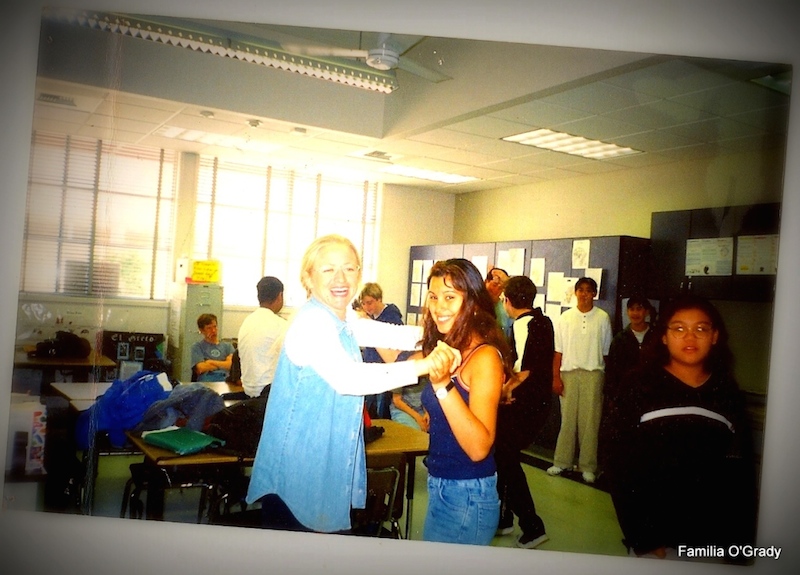Learning Spanish: 5 Helpful Ways to Become Fluent

As a Master Teacher of Spanish with a specialty in Cross-Cultural Education and Curriculum Development, I feel I have a certain advantage and insight into language acquisition. I am often asked what are some of the best ways for learning Spanish, and improving upon one’s speaking skills. Whether you are a novice or an intermediate speaker, the following suggestions are sure to help you achieve competency and if desired, eventual fluency:
Learning Spanish: 5 Ways to Become Fluent
1. Examine your motivations for learning Spanish
Do you have an intrinsic desire to learn the Spanish language and to connect with and understand the culture? What are your reasons for wanting to learn Spanish? Are they external—your mother wants you to, you need a passing grade in an elective, or you feel residual guilt from an unmet goal? Or are your motivations born from a personal hunger for intellectual stimulation and cultural awareness?
If you are trying to learn Spanish because you “have to” and you’re truly not feeling the necessary commitment, perhaps aspiring towards another goal would be a better use of your time. However, if your desires are internally-driven, you have an advantage from the get go and you will not only learn the language, but also enjoy doing so.
What is it that you love about the culture? Is it the music, the people, the arts, the food…..all of the above? Reflect on those things as a way of fueling your desire to learn. Language is a vehicle through which many doors are opened and connections are made. Acquiring another one, Spanish in this case, is a skill you will never regret. It can only add value to your life.
2. Learn like a child
People often share with me that they can understand a lot more Spanish words than they can speak. This is a totally normal and expected initial stage of language learning. When you first set out to learn Spanish, you will be in a listening stage—-ideally you always will be no matter where you are at on the learning continuum—but in the beginning, just go with it and accept it. I guarantee you it will lower your frustration factor if you see it for the normal developmental stage that it is.
Focused, contextual listening, with efforts at production, allow your ear and brain to become accustomed to the rhythm, flow, and patterns of the language. Spanish classes and textbooks are great and have their place, but it’s mostly the context-rich learning that will improve and expedite your acquisition of Spanish.
Music (including nursery rhymes), cartoon shows, movies with and without subtitles, talk radio, trying to decipher billboards and other print media all are engaging and effective ways to supplement your language learning. Go to the library and check out some children’s books, rent movies in Spanish, tune your car radio to a Spanish-speaking channel….all of these learning modalities add up to the larger picture of your desired fluency.
Learn like a child, take it all in, be curious and observant…and be patient with yourself. Seek out opportunities to practice Spanish, immerse yourself in real life learning opportunities. Learning in isolation only—behind a computer screen, nose in a book—-will likely not give you an adequate return on your investment. Get out there and practice, speak, listen, engage with other Spanish speakers. Even if your pronunciation or syntax is not perfect, native speakers will likely feel honored that you are making the effort to communicate with them in their mother tongue. My experience is that a smile and an open, positive attitude illicit on-the-spot, real-time, street-style learning….often the best kind of learning there is!
Learning Spanish: 5 Ways to Become Fluent.
3. Put in the time, and do the work
Yes, learning Spanish will require some work, studying, practice, repetition, commitment, consistency, sticktoitiveness. Find what works for you. Do you prefer one-on-one instruction, small or large group classes, an interactive computer program, flashcards, textbooks….a combination of some or all?
Identify what your learning style is and capitalize on it. Don’t try to be something you’re not or do something that is not in alignment with your style. If you prefer to spend minimal time with textbooks, then get out there and start listening and speaking to people. If you feel more confident with some technical/grammar knowledge first, get that base under your belt and then put it to real-life conversational practice. Whatever way is yours, identify it, put in the time and do the work. I promise you, it will be worth it.
4. Spend an extended amount of time in a Spanish-speaking country
This is why immersion programs work. Living abroad in a country where Spanish is the native tongue is hands down the number one way to learn the language. Before I moved to Spain during my junior year of college, I was very conversant in Spanish, but it was really only upon being ‘forced’ to speak the language day in and day out—at the laundromat, at the post office, buying groceries, living a life in Spanish—-that all the dots connected and before I knew it, I began dreaming in Spanish! Dreaming in the language of acquisition is a tell-tale sign that your brain is making the connections and crossing over the bridge from emerging learner to fluency.
5. Extra tips
* Are you a visual learner? Place sticky notes around your house with the Spanish names for the items. Every time you see the word attached to the item, say it out loud.
* If you prefer online/computer programs, I have recommended the Rosetta Stone Program to many of my students over the years and have purchased for use inside The O’Grady Home.
* A website I often used as a teacher in my lesson planning and one I would recommend to my students for further practice outside of the classroom is LearnSpanish.com. It provides simple, easy to understand, chronological, free Spanish lessons—many with audio.
* Fall in love….with a person, the culture, the music, the sights, the sounds, the history, the vibrancy, the idiosyncrasies of the ever dynamic Spanish-speaking culture, whether it be the Caribbean, Central or South America, Mexico, Spain or Morocco…..If your fire and desire for language acquisition and cultural understanding comes from within, the learning will all fall into place.
I wish you the best of luck on your road to learning Spanish. Language provides a platform through which we can connect, understand, love, play, forgive, laugh and cry. Language is primal, organic, a birthright, and essential to the human experience.

Learning Spanish: 5 Ways to Become Fluent photos by Unsplash and Katie O’Grady.









I love this post, particularly because you used my favorite word in the English language: sticktoitiveness (you don’t see it written enough). Your tips convey exactly how I became fluent in English in less than three months — Fall in love part is key. I found you on your expat blog, I feel like we are living backwards lives and ironically I was able to get off the rat race by moving to San Diego (I am from Mexico City). But who knows, one day we might move again, it’s the destiny of a wanderer heart.
Hola Fabiola!
This is just wonderful! “Living backwards lives” 🙂
I love reading what you have shared here!
For me, it all gets down to getting out there and experiencing as much of this beautiful world as we can, harming no one, doing our thing, having FUN, standing in our truth….
Enjoy San Diego….it is a beautiful city and my home town.
From one ‘wanderer heart’ to another…
Cheers,
Katie 🙂
Hi Robert,
Thank you for the feedback and it sounds like you went about language learning the right way—contextually-rich environments are hands down the best, easiest and fastest way to learn! And look at you—dreaming in Spanish! You found the lucky charm, congratulations!
Cheers and if you would like to follow more of our adventures, we’ll see you over at www.losogradysinmexico.com
~Katie 🙂
All very good points to consider. I had a hunger to learn and it was as you say, slow at first. I knew words long before I could understand the language.
I found contextual learning very helpful. As a Christian I started going to a local mexican church. This allowed me to hear spanish spoken about a subject that I was very familiar with and just ‘take it in’.
Also very helpful was getting a job working with mexicans all day, everyday. I found that at times I had no need of speaking english all day, this was essentially the same as living in a foreign country It did in fact lead to dreaming in spanish which I found to be exhilarating.